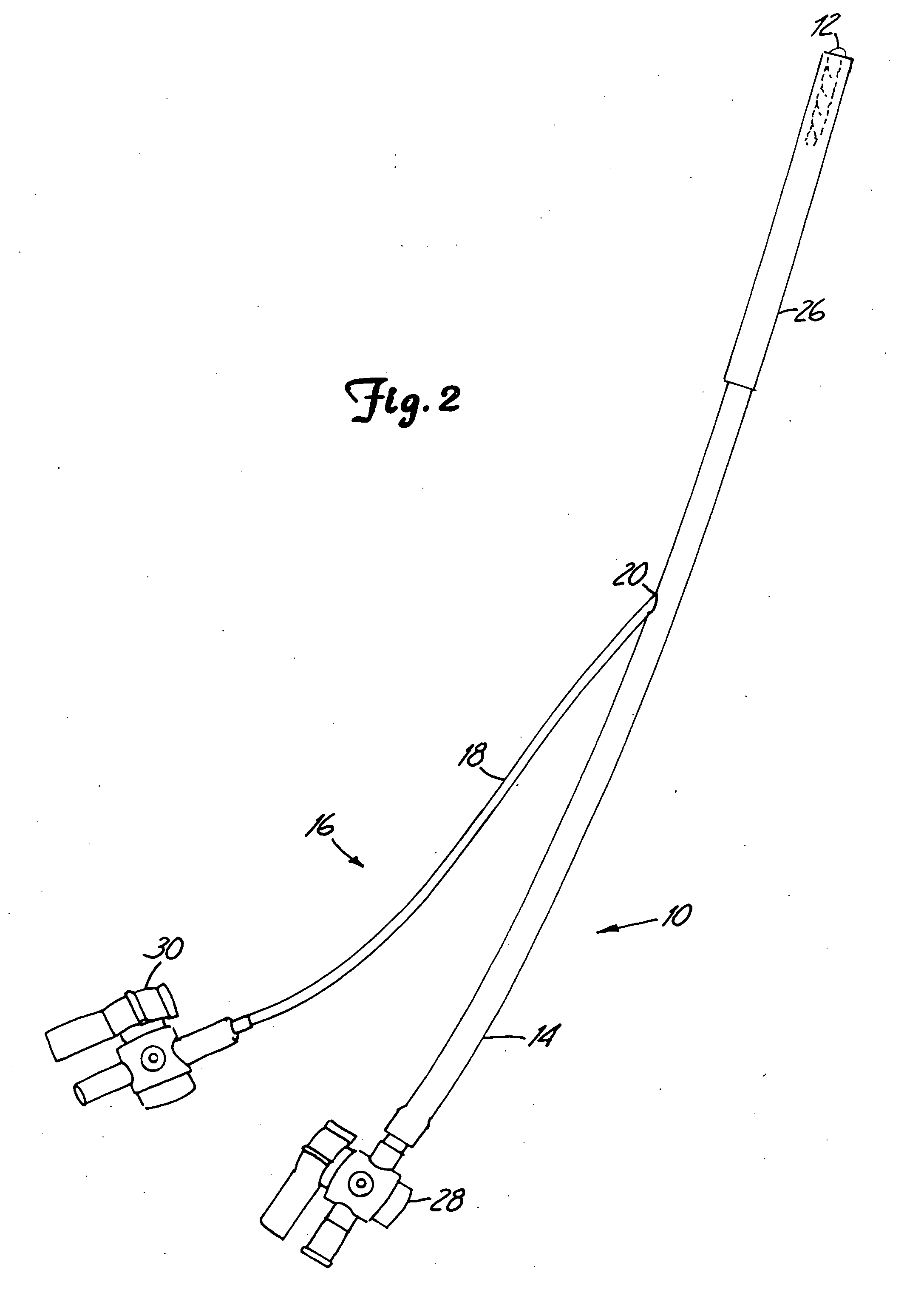Knee joint prosthesis
a knee joint and prosthesis technology, applied in the field of knee joint prosthesis, bone and cartilage repair and replacement, can solve the problems of significant pain, inability to describe the hydrogel barrier as being useful in weight-bearing, orthopedic applications, etc., and achieve the effect of improving the combination of such properties as hardness, strength and/or cure characteristics
- Summary
- Abstract
- Description
- Claims
- Application Information
AI Technical Summary
Benefits of technology
Problems solved by technology
Method used
Image
Examples
Embodiment Construction
[0091] The present invention provides a method and system for the repair of natural tissue that involve the delivery of a biomaterial composition using minimally invasive means, the composition being curable in situ in order to provide a permanent replacement for natural tissue. Optionally, and preferably, the biomaterial is delivered to a mold apparatus that is positioned by minimally invasive means and filled with biomaterial composition, which is then cured in order to retain the mold and cured composition in situ.
[0092] As used herein the following words and terms shall have the meanings ascribed below: [0093]“repair” will refer to the use of a composition to augment, replace or provide some or all of the structure or function of natural tissue in vivo, for instance, to provide an implant such as a catheter, or to repair (e.g., reconstruct or replace) cartilage, such as fibrocartilage or hyaline cartilage present in a diarthroidal or amphiarthroidal joint. Repair can take any s...
PUM
| Property | Measurement | Unit |
|---|---|---|
| tensile strength | aaaaa | aaaaa |
| tensile strength | aaaaa | aaaaa |
| inner diameter | aaaaa | aaaaa |
Abstract
Description
Claims
Application Information
 Login to View More
Login to View More - R&D
- Intellectual Property
- Life Sciences
- Materials
- Tech Scout
- Unparalleled Data Quality
- Higher Quality Content
- 60% Fewer Hallucinations
Browse by: Latest US Patents, China's latest patents, Technical Efficacy Thesaurus, Application Domain, Technology Topic, Popular Technical Reports.
© 2025 PatSnap. All rights reserved.Legal|Privacy policy|Modern Slavery Act Transparency Statement|Sitemap|About US| Contact US: help@patsnap.com



